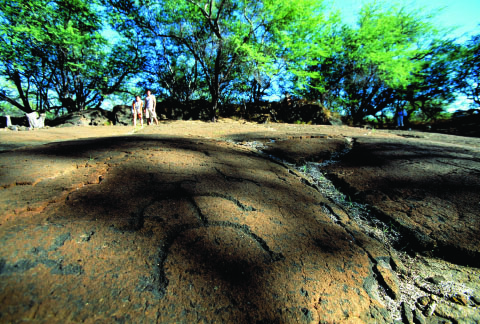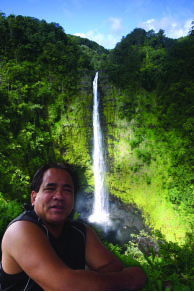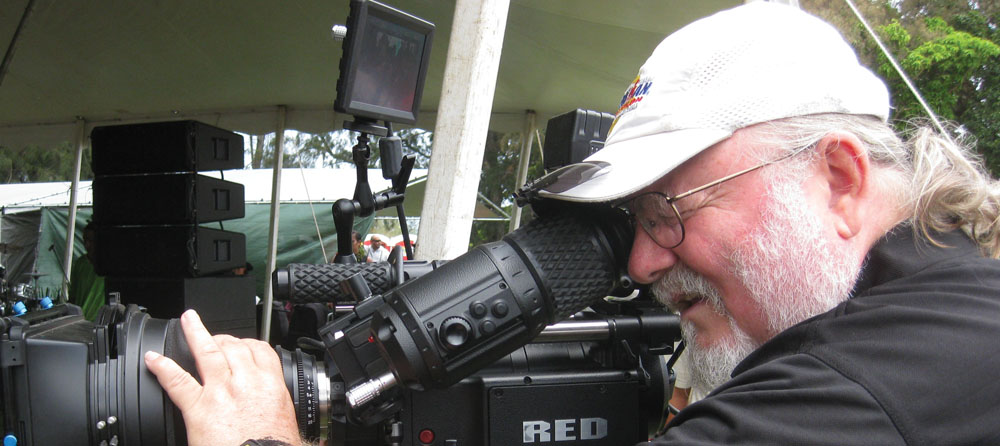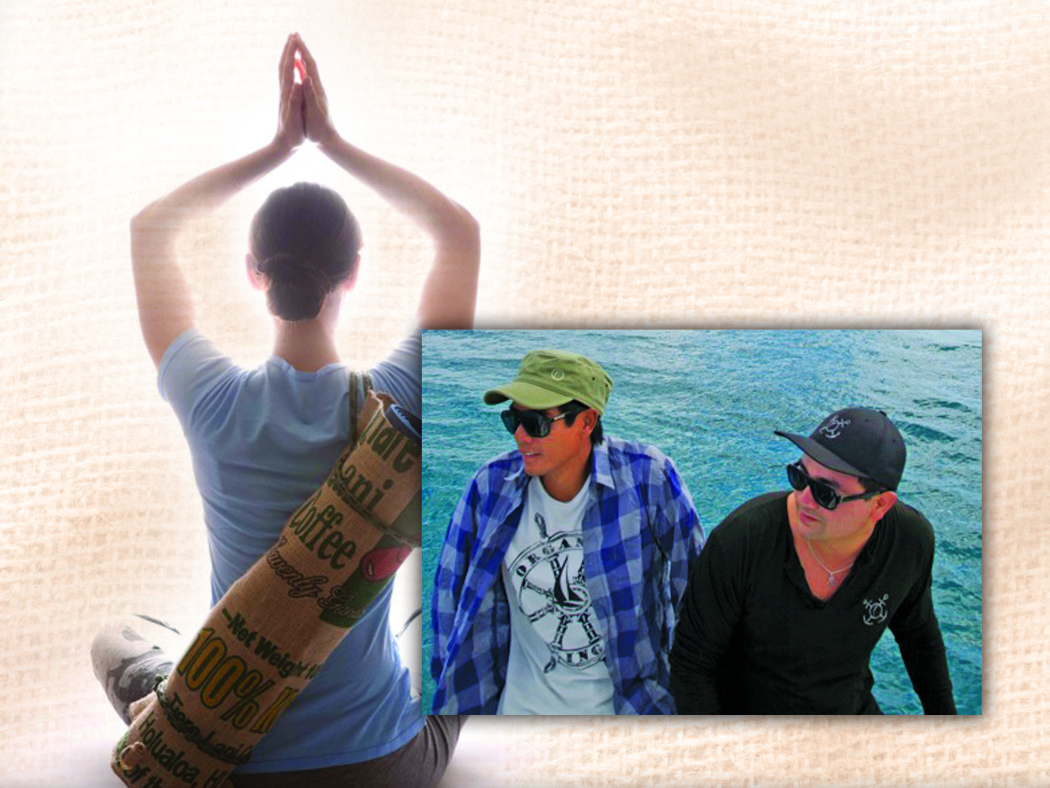
The New Face of Tourism: Ecotourism

By Hadley Catalano
Pull up your sleeves, find your gardening gloves and lace up your work boots – you’re on vacation. What seems less like rest and relaxation and more like manual labor has become the latest trend for traveling tourists. Trading in their blue or white collars for the more responsible green collar, more and more visitors to Hawai‘i Island are finding themselves seeking out the environmentally and culturally-conscious opportunities available through the island’s ecotourism. And for residents whose visiting relatives have done everything else, here are some new ideas to keep them from getting bored.
Whether it’s partaking in the wide range of “voluntourism” opportunities such as weeding invasive plants at Hawai‘i Volcanoes National Park (HVNP) or scheduling a day learning about a working farm in South Kona through the island’s agricultural tourism possibilities, the opportunity to really connect to the island has never been so apt.
“As the world changes, people are looking to nature. They are looking for meaning in life,” explained George Applegate, Executive Director of the Big Island Visitor’s Bureau (BIVB). “People are no longer just sitting on the beach. They are getting involved.”
Applegate and the BIVB have been actively marketing the back-to-the-land activities desired by many travelers by establishing the only sustainable tourism “micro-site” (www.bigisland.org/ecotourism) of any of the Hawaiian Islands.
Due to its fragile ecosystem, Hawai‘i tourism planners are concerned about modeling visitor attractions to minimize the impact that the some 7 million outsiders pose for the region each year. Native Hawaiians paved the way, providing a sustainable ideal for modern day Hawaiians to follow. Local businesses and organizations have picked up the torch, providing people the opportunity to appreciate the natural state of the islands and practice sustainable, conservation practices.
Hawai‘i Forest and Trail (HFT), a Kona-based company that provides guided nature tours, has been a statewide leader in ecotourism and natural history education since 1993. HFT abides by its trifurcated mission – to give visitors the opportunity to experience Hawaii’s resources, engage them on a deeper level with the resource and facilitate a connection between the resource and tourist.
“We see a lot of trophy seekers,” Chris Colvin, Marketing and Sales manager at HFT explained about his clientele. “The intrinsic hooks draw them to the Big Island. They want to see the most active volcano in the world or climb Mauna Kea. After we facilitate the connection of the deeper level of interpretation, we see a person who wanted to see the most active volcano be converted to someone who wants to contribute to the conservation of that resource.”
Interwoven with the spectrum of ecotourism design is the incorporation of community neighbors. HFT engages land owners into their operation, working together to create a sustainable business valuable on socio, cultural and environment levels.

“Working with private land owners and resource managers, we seek to create a perpetual open space revenue. A portion of the proceeds goes back to the private land owner, an incentive for them to keep their open space undeveloped, for the benefit of the public.”
Other ecotourism operations around the island are also tapping into the local resources, allowing the visitor to experience the full living history, cultural healing and therapeutic beauty of the land.
David Gaynes is the operator of Wellness with Aloha, a unique business that offers a “spiritual concierge service,” for visitors seeking to immerse themselves in the traditional powers of native healing techniques.
“People are looking at the planet. They want to protect the place they are coming to visit. They want to leave a light footprint,” explained Gaynes, noting that it is people of this mindset that seek out his service. “I offer the opportunity for people to get their feet in the mud. They can spend time in Waipio Valley, pulling taro with a family. They can work with local kahunas, experience the psychic healing powers out in the ‘aina. We live in the world’s greatest yard. We should be out in it every chance we get.”
Gaynes noted that his new business was based in community collaboration. By focusing on appreciation of the land and culture, Gaynes offers a spiritual pilgrimage for those seeking the healing powers of the Hawaiian earth, elders or ecology while in turn supporting the local providers.
“How do we offer economic sustainability to the next generation of taro farmers or lomi lomi masseuse? We create sustainable businesses models using local resources, joining the people, culture and land,” said Gaynes.
Green guests are exploring their bedding options in conjunction with their daily activities. Many overnighters are booking reservations at earth-minded B&Bs. Elegant off-the-grid B&B Waianuhea in Ahualoa is an example of a get-a-way retreat, offering all the amenities of a large hotel but capitalizing on their ability to use solar power, water catchment system and eco-friendly cleaning products. Ka’awa Loa Plantation and Guest Retreat in Captain Cook offers visitors a stay on a 5.6 acre diversified agriculture plantation, aiming to sustain both agriculture for the island and share it with guests.
Roaming the possibilities as a responsible traveler has people searching for natural and cultural tours and experiences. In an attempt to help improve the well-being of the local people, support area business and conserve the island’s pristine beauty, people are signing up for farm tours, helping the Hawai‘i Island Humpback Whale National Marine Sanctuary by recording endangered humpback whales seen from shore during weekly ocean counts, or helping to restore the dry land forests with the Tropical Reforestation and Ecosystems Education Center of Hawai‘i.
Others are booking farm visits through Hawai‘i AgVentures, a project created by the Big Island Farm Bureau (BIFB). Representing 450 farms, ranch families and agricultural organizations, the BIFB, according to their website, created the ag tourism project to facilitate markets and promote on-site farm visits. Through the implementation of offering high-quality educational farm tours, the hope is that the farmers will be able to expand their markets while providing visitors with a farm-direct experience.

From nature walks, visits to botanical gardens, and eco-tours to volunteering for a conservation cause, travelers are learning more and participating more in the daily cultural, historical, local and environmental aspects of Hawai‘i Island.
“Sometimes we have two or three people that want to participate, other times it’s the whole group, 10 people,” Colvin explained about HFT’s voluntary option for tour guests to participate in pulling invasive kahili ginger from special, controlled monitoring sights at HVNP. “We’re tapping into the people that want to help. They want to lend a hand. We work anywhere from half an hour to an hour. Sometimes we have to pull people away after we’ve been working for an hour and a half.”
HFT also maintains a lo`i (taro patch) in Kohala, a terrace along the stream used to grow kalo (taro) as part of their cultural resource initiative. “We want to continue the traditional practice and get people involved in cultural tourism and voluntourism,” said Colvin, noting that HFT is a member of the World Heritage Alliance, a UNESCO (United Nations Educational, Scientific and Cultural Organization) operation that recognizes the preservation of cultural sites and their value to humanity. HVNP was inducted in 1987 as a World Heritage site, the first and only one in the Hawaiian Islands.
Sustainable ecotourism has become integrated into the island’s latest leading industry. By minimizing the negative impacts on the environment, promoting local culture and heritage and emphasizing the invaluable importance of sustaining and preserving the environment and people, Hawai‘i will continue to be iconic Hawai‘i. ❖
Free Big Island Activities:
From mountaintop to ocean floor, the Big Island offers countless, enjoyable and free recreational activities. Here are just a few:
- Pana‘ewa Rainforest Zoo & Gardens. South Hilo. Features a children’s petting zoo on Saturdays, a white Bengal tiger, and botanical gardens on its 12-acre campus. Open 9-4 daily. Free admission. 959-7224.
- Mokupāpapa Discovery Center. Hilo. Showcases the marine life of the Northwestern Hawaiian Islands. Open Tues. – Sat. 933-8195.
- Kalōpā State Recreation Area. Honoka‘a. Nature hikes in native ‘ōhi‘a forest and trails in the adjoining forest reserve. Picnic area.
- Kohala Historical Sites State Monument. Hawi. Mo‘okini Heiau, a National Historic Monument, is an ancient sacrificial heiau, and down the road, Kamehameha’s Birth Place.
- Lapakahi State Historical Park: Kawaihae. A partially restored ancient coastal settlement, with daily cultural demonstrations and storytelling. Puakō Petroglyph Preserve: Puako. A short hike leads to more than 3,000 petroglyphs.
- Kona Historical Society, South Kona. Experience (and sample) traditional Portuguese bread baking in stone ovens, every Thursday 11 a.m.–2 p.m. 323-3222.
- Ka Lae: South Point. Green sand beach and breathtaking cliffs, this is the southernmost point in the U.S. A National Historical Landmark district.
- Lava Tree State Monument, Pāhoa. A forest of “lava trees,” formed by a lava flow that swept through the area and left behind lava molds of tree trunks.
- Mauna Kea: Saddle Road. 13,000 feet. Visitors Information Station, astronomical observatories and nightly stargazing program.


